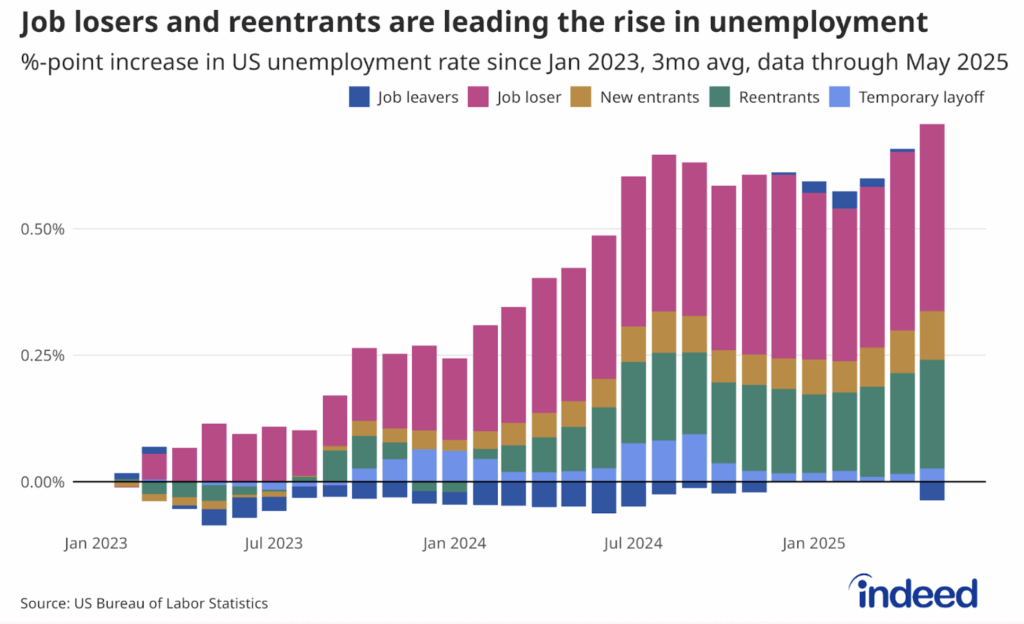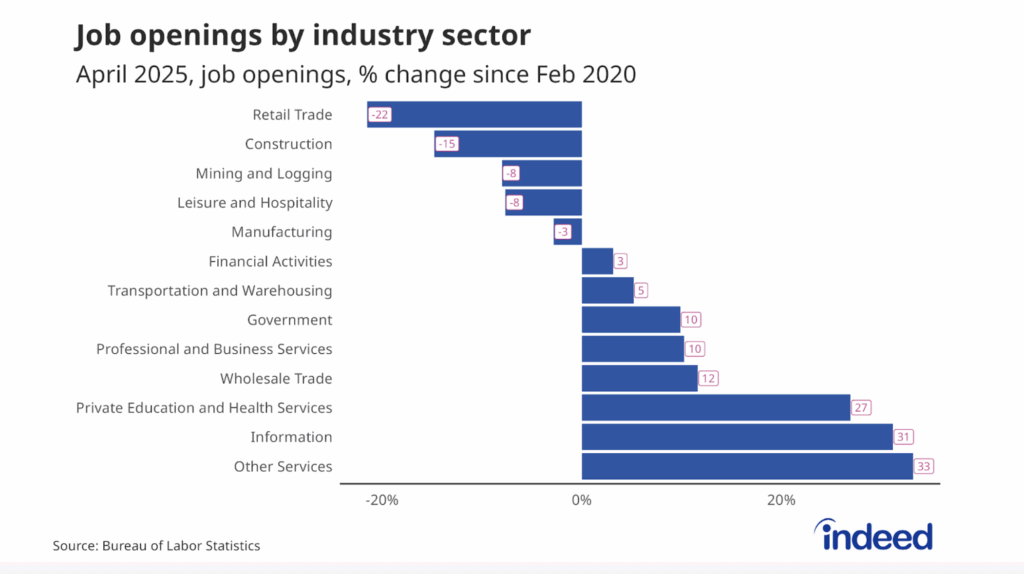We regularly update this report to track the pandemic’s effects on the labor market.
Job postings on Indeed are a real-time measure of labor market activity. On February 18, 2022, they were 60.4% above February 1, 2020, the pre-pandemic baseline, after adjusting for seasonal variation. Postings declined 0.3 percentage point in the past week, with the recent January dip likely driven by the latest wave of the pandemic.
It seems like the worst of the omicron surge’s impact might have passed. New job postings (those on Indeed for seven days or less) are well above pre-pandemic baseline, up 83.9% as of February 18.
The Bureau of Labor Statistics reported 10.9 million job openings at the end of December in its latest JOLTS report. Job postings on Indeed decreased 2.2% between December 31 and February 18. If JOLTS openings have declined since December at the same rate as Indeed job postings, that implies 10.7 million job openings as of February 18.
Lots of postings for HR and software development jobs
Job postings in all occupational sectors are above the pre-pandemic baseline, especially human resources and software development. However, plenty of sectors are still feeling residual effects of the latest wave of the pandemic. Food preparation & service, retail and hospitality & tourism all declined over the last four weeks. These occupational sectors are particularly vulnerable to the pandemic, as many of these jobs are in-person and serve in-person consumers.
Job postings recovering across metros
Within the US, job postings are up essentially everywhere. Postings are at least 30% above the pre-pandemic baseline in all large metros. However, in the last four weeks, job postings grew only in four of the ten metros that have recovered slowest during the pandemic.
Job postings have grown fastest in Phoenix, AZ, up nearly 94% above pre-pandemic baseline as of February 18. Phoenix, AZ and Austin, TX have seen substantial job growth during the pandemic but also for decades beforehand.
Metros where a higher share of people can work from home continue to recover more slowly than metros generally. These are mostly large metros with high education levels like tech hubs and finance centers. Throughout the pandemic, job postings rebounded more slowly in these metros. Postings in these metros finally rose above the pre-pandemic baseline in March 2021, but still lag all metros’ job growth by 10 percentage points.
We host a subset of the underlying job-postings chart data on Github as downloadable CSV files. Typically, it will be updated with the latest data one day after this blog post was published.
Methodology
All figures in this blog post are the percentage change in seasonally-adjusted job postings since February 1, 2020, using a seven-day trailing average. February 1, 2020, is our pre-pandemic baseline. We seasonally adjust each series based on historical patterns in 2017, 2018, and 2019. Each series, including the national trend, occupational sectors, and sub-national geographies, is seasonally adjusted separately. We adopted this new methodology in January 2021. Data for June 24-30, 2021, November 1, 2021, January 1, 2022, January 27, 2022 and January 28, 2022 are missing and were interpolated. The median hourly advertised wage of job postings is calculated by occupational sector for calendar year 2019.
Indeed no longer allows Colorado jobs that ask the candidate to disclose their previous salaries. This has a meaningful effect on our postings in the state of Colorado and its metros, though not on our national totals.
The number of job postings on Indeed.com, whether related to paid or unpaid job solicitations, is not indicative of potential revenue or earnings of Indeed, which comprises a significant percentage of the HR Technology segment of its parent company, Recruit Holdings Co., Ltd. Job posting numbers are provided for information purposes only and should not be viewed as an indicator of performance of Indeed or Recruit. Please refer to the Recruit Holdings investor relations website and regulatory filings in Japan for more detailed information on revenue generation by Recruit’s HR Technology segment.”






